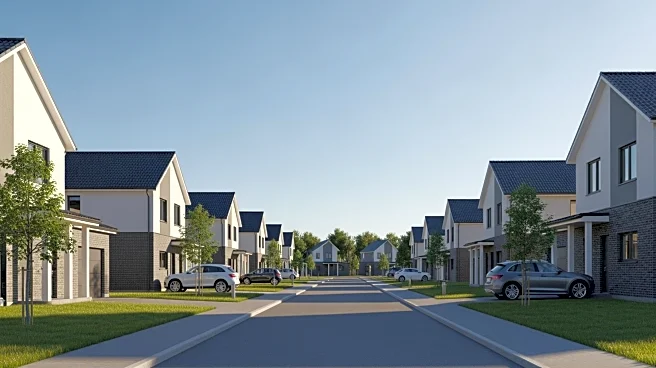What's Happening?
Home prices across the United States are beginning to stabilize, yet they remain high, making homeownership challenging for many potential buyers. The situation is exacerbated by near record-high mortgage rates, which significantly increase monthly payments.
As a result, many prospective homeowners are looking beyond expensive urban centers, especially those who can work remotely. In Huntsville, Alabama, data from Realtor.com's Cross-Market Demand Report reveals where local buyers are focusing their searches. The report highlights that Birmingham, Alabama, is the most popular destination, with a view share of 14.6% and a median listing price of $299,900. Other notable areas include Decatur, Florence, and Albertville, Alabama, each with varying median listing prices and view shares.
Why It's Important?
The trend of expanding home searches beyond urban cores reflects a significant shift in the housing market, driven by high mortgage rates and the increasing feasibility of remote work. This shift could lead to economic and demographic changes in smaller cities and towns as they attract more residents. For local economies, this influx could mean increased demand for services and infrastructure, potentially boosting local businesses and job markets. However, it also raises concerns about affordability and housing supply in these areas, as increased demand could drive up prices, affecting long-term residents. The real estate market's dynamics are crucial for economic stakeholders, including realtors, developers, and policymakers, who must adapt to these evolving trends.
What's Next?
As the housing market continues to adjust to high mortgage rates, potential homebuyers may increasingly consider alternative financing options or wait for rates to decrease. Real estate developers might focus on building in these emerging markets to meet the growing demand. Policymakers could also play a role by implementing measures to ensure housing affordability and availability in these areas. The ongoing trend of remote work is likely to persist, further influencing housing market dynamics and potentially leading to more widespread changes in where and how people choose to live.













